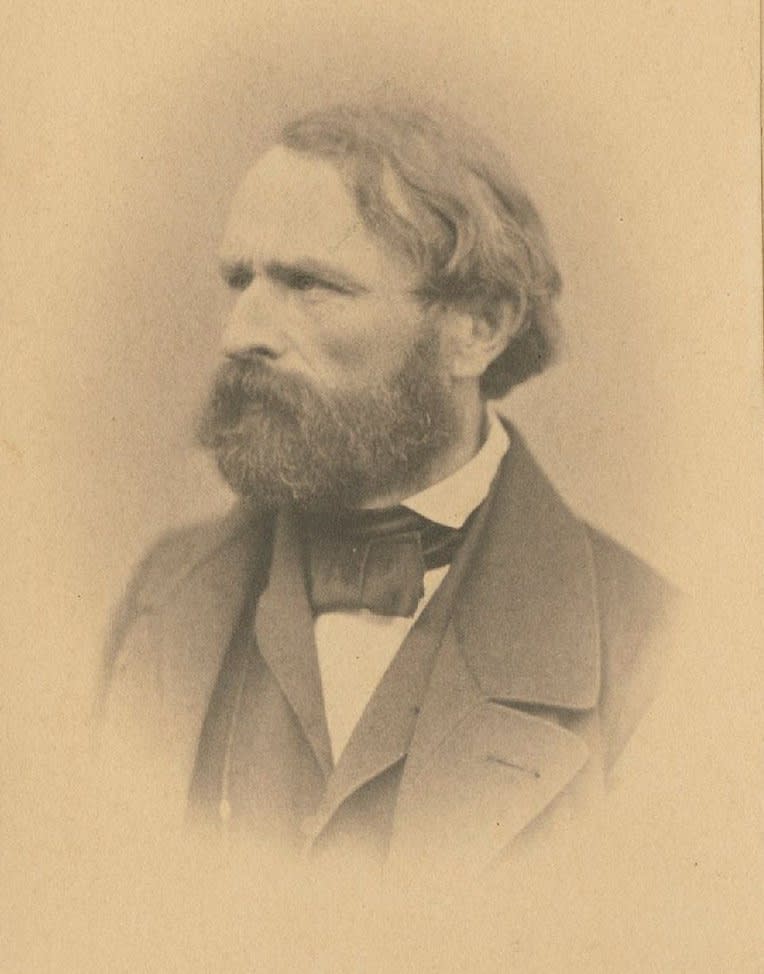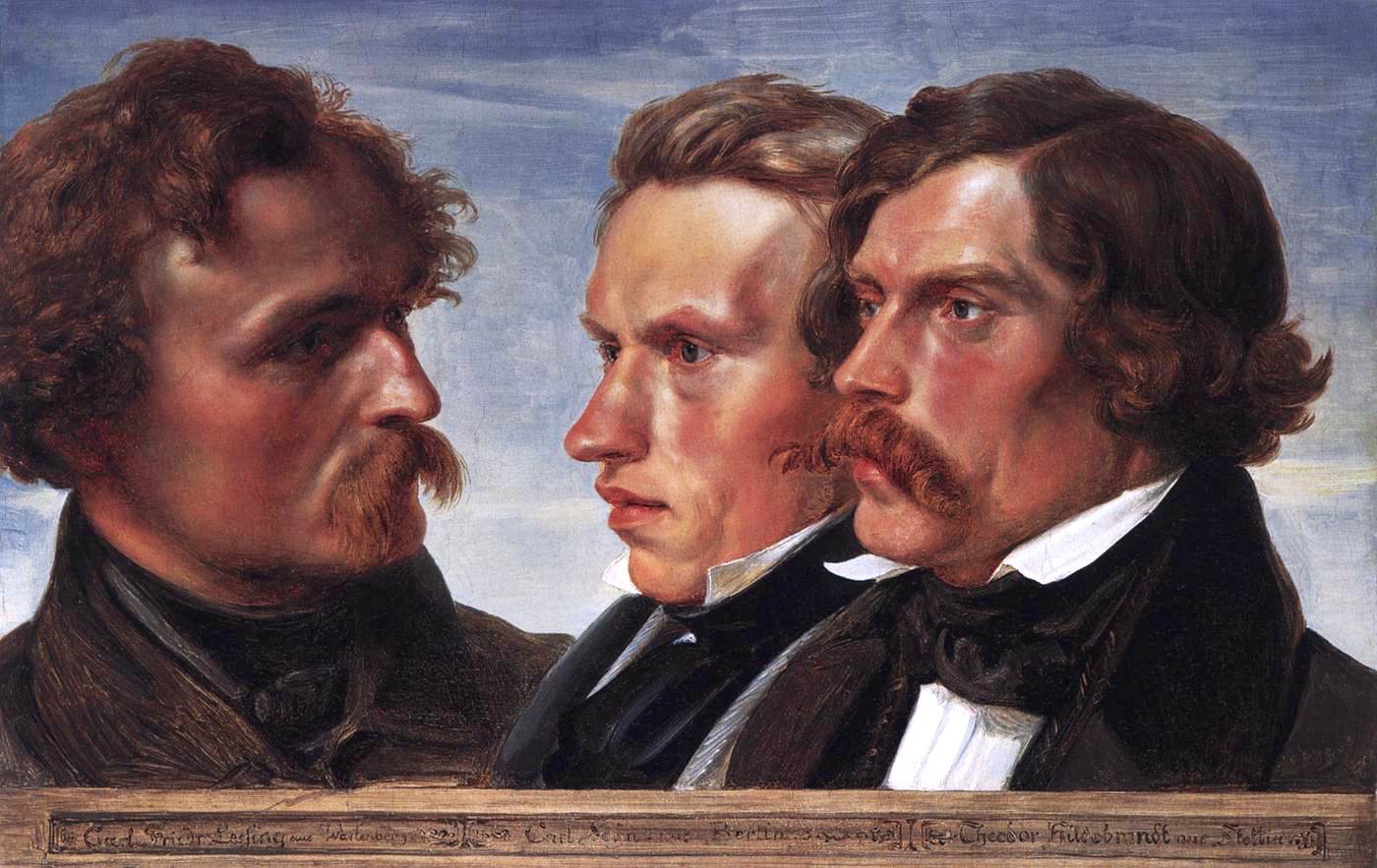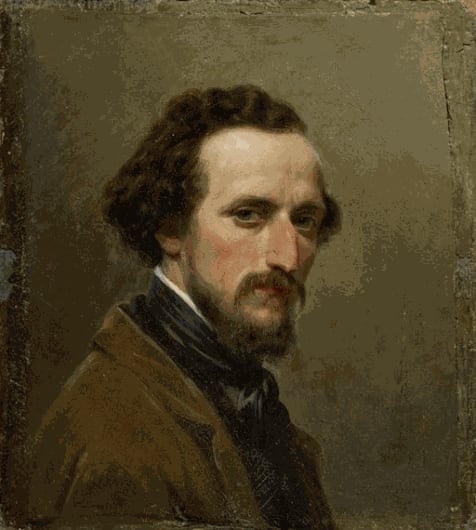
Rudolf Julius Benno HÜBNER
Portrait of the painter Karl Friedrich Lessing, c. 1839
Oil on canvas applied to cardboard
30 X 24 cm
SOLD
CINCINNATI ART MUSEUM
Rudolf Julius Benno HÜBNER
(Oleśnica, Poland 1806 –Loschwitz, Dresden, Germany 1882)
Rudolf Julius Benno Hübner was a German painter, belonging to the Düsseldorf school.
The sitter is the German painter Karl Friedrich Lessing (1808-1880), the great-grandson of the famous German playwright and philosopher Gotthold Ephraim Lessing.
We can be certain of his identity not only thanks to a photograph (Fig. 1) which, although taken later, allows us to recognize the face of the German artist, but especially thanks to a group portrait (Fig. 2) painted in 1839, again by Hübner, in which Lessing – on the left – is in the company of Karl Sohn (1805-1867) and Theodor Hildebrandt (1804-1874).

Fig. 1 - Photograph by Karl Friedrich Lessing, c. 1868, about 30 years later

Fig. 2 - Rudolf Julius Benno Hübner,, The painters Karl Friedrich Lessing, Carl Sohn and Theodor Hildebrandt, 1839, Alte Nationalgalerie, Berlin
Like Hübner himself, all three subjects were part of the Düsseldorf School: a movement formed by a group of painters who had taught or studied at the Düsseldorf Academy, and who steered the educational institute towards the Nazarene movement and classicism. The portrait presented here can, and should, also be compared with Carl Friedrich Lessing's Self-portrait (Fig. 3) where the overall mien is similar to ours.

Fig. 3 - Karl Friedrich Lessing, Self-portrait
The psychological insight of the portrait is rendered with great intensity through the deep gaze accentuated by asubtle shadow beneath the right eye and the various reflections of vibrant light surrounding it. The technical quality is also evident in the subtly curly thick hair. His beard, in the Berlin image only hinted at, here instead is well developed.
This painting can be dated to around 1839, when Hübner accepted a post at the Dresden Art Academy, and this may perhaps have been the motive for and occasion of the portrait creation. After spending several years (from about 1826) working under a Polish diplomat, Count Atanazy Raczyńsky, Hübner succeeded in obtaining a professorship at the Dresden Academy. Having finally freed himself from the status of a “servant” artist who was mainly commissioned to produce biblical subjects by his Polish patron, now the artist could allow himself to paint different subjects and made a reputation for himself depicting Germanic sagas and fairy tales, as well as his friends and colleagues.
Join the mailing list
Subscribe to our newsletter to receive all the news about exhibitions, fairs and new acquisitions!